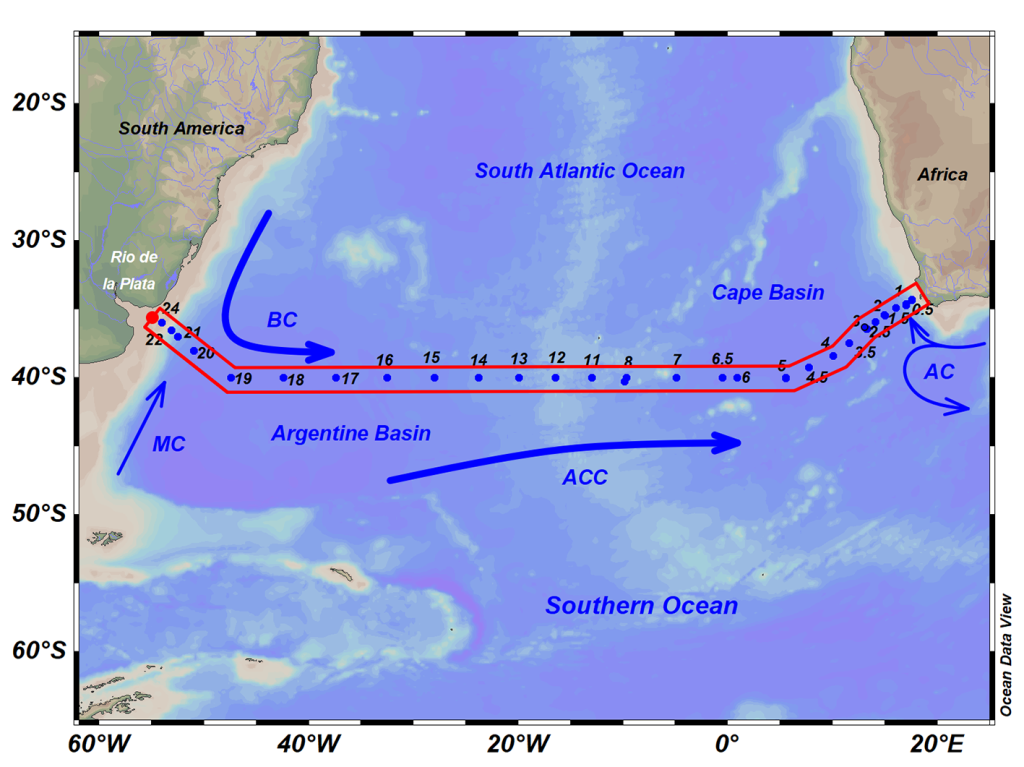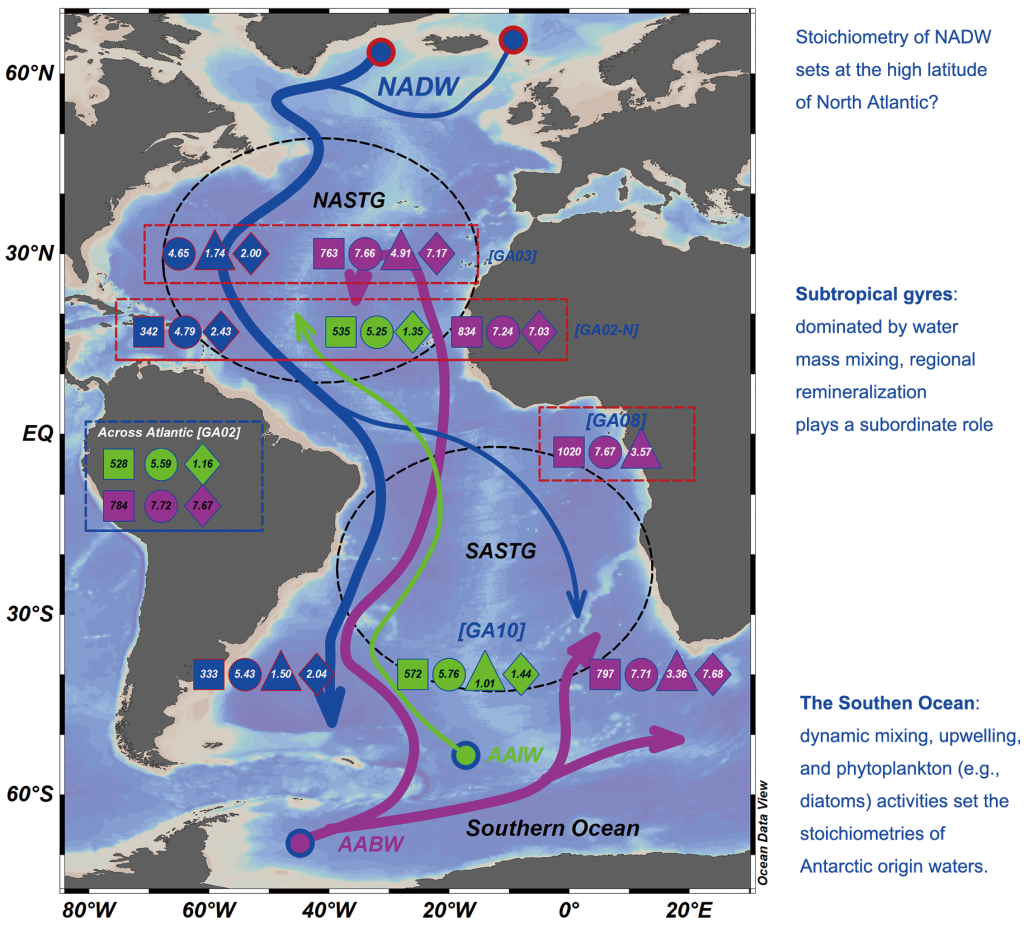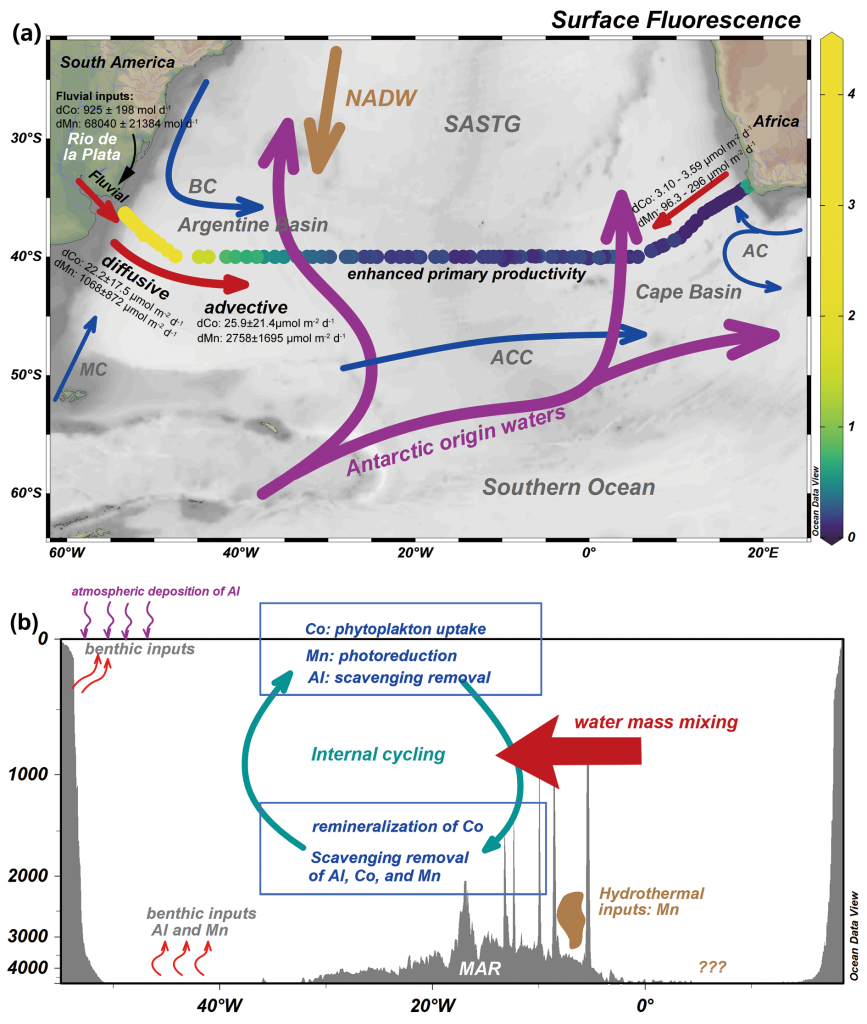What are the drivers of the distributions of cadmium, nickel, zinc, copper and cobalt, manganese and aluminium in the Atlantic Ocean? Two papers are tackling this issue
Two articles of Chen and his colleagues (2024, see reference below) discuss the drivers of the distribution of (Art#1) bioactive trace metals and nutrients (cadmium, Cd; nickel, Ni; copper, Cu; zinc, Zn) – and Art#2 of three other trace metals -among them 2 bioactive – (cobalt, Co; manganese, Mn; and aluminium, Al) in the South Atlantic.
In both articles, dissolved (dTM) and particulate phases (pTM) of the tracers are analysed. In surface waters, all dTMs and pTMs were determined by external sources and complex internal biogeochemical processes. Specifically, fluvial and sedimentary inputs near the Rio de La Plata estuary and benthic sources from the Agulhas Bank were important sources of TMs in near-shore surface waters, while dMn was more sensitive to oxidation-reduction processes and dAl was supplied by atmospheric deposition and removed by scavenging onto particles.
Textbooks typically demonstrate that the vertical distributions of dTMs is typically controlled by one-dimensional processes (e.g., surface uptake by phytoplankton, subsurface remineralisation, scavenging removal, and reversible scavenging. However, the authors reveal that the distributions of dTMs at depth in the South Atlantic are predominantly controlled by the mixing of North Atlantic Deep Water (NADW) and waters of Antarctic origin (UCDW, AAIW, AABW) with only minor contributions from local remineralization or hydrothermal inputs. The endmember characteristics of Antarctic waters and NADW are largely fixed in their formation regions in high latitude oceans and hence changes in localized processes (e.g., glacier melt, vigorous mixing, upwelling and sinking of water masses) that control dTM inventories in the high latitude oceans may result in subsequent basin-scale to global-scale variations of dTM concentrations.



References:
Chen, X.-G., Gledhill, M., Lohan, M. C., Milne, A., & Achterberg, E. P. (2024). Surface ocean biogeochemistry and deep ocean circulation control relationships between nutrient-type trace metals (Cd, Ni, Cu, and Zn) and nutrients in the South Atlantic Ocean near the subtropical front. Geochimica et Cosmochimica Acta, 370, 144–160. Access the paper: 10.1016/j.gca.2024.01.001
Chen, X.-G., Milne, A., Klar, J. K., Gledhill, M., Lohan, M. C., Hsieh, Y.-T., Henderson, G. M., Woodward, E. M. S., & Achterberg, E. P. (2024). Controls on distributions of aluminium, manganese and cobalt in the South Atlantic Ocean along GEOTRACES transect GA10. Geochimica et Cosmochimica Acta, 373, 177–196. Access the paper: 10.1016/j.gca.2024.03.019
